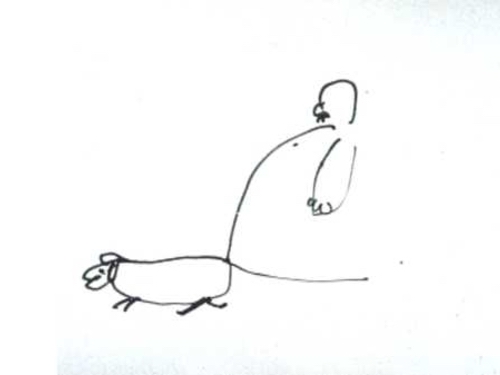
Lines stretch, bend, twirl and break, dynamically sketching a neighborhood, with its buildings and trees, its sidewalks and birds and, finally, a man and his dog walking in the city. Originally shown as a short before Last Year at Marienbad (Alain Resnais, 1961) during that film's initial New York theatrical release.
EN
“Dadaist and abstract influences converge in this subtle animation by a most original avant-gardist. The images constantly merge, collapse, change into lines and shapes of astonishing fluidity and expressive power, as the director reinvents space and inflicts gentle Dadaist outrage on a defenseless world.”
Amos Vogel1
“I must say that people seem to read into A Man And His Dog Out For Air a lot more from its title than what I actually conceived when I made the images. I can describe it as a sort of stew: once in a while something recognizable comes to the surface and disappears again. Finally at the end you see the man and his dog, and it's a kind of joke. The title and the bird songs make you expect to see the man and his dog, and it's the absurdity that makes audiences accept what is basicalIy a free play of lines and pure rhythms.”
Robert Breer2
“The earliest films he made, between 1952 and 1957, grew out of the norms of geometrical painting into those of the graphic film, with important modifications of both. But beginning with A Man and His Dog Out for Air (1957), he made animated cartoons until 1964, in which cartooning broke up and led back to the fast motion cinema of his earlier works. In the cartoon films there is a shift in his working process. Instead of creating the film directly in front of the camera as he was shooting it, he began to draw the lines and figures of individual frames on paper and cards. By flipping through the cards he could approximate the experience of the film. The actual shooting became more of an exercise in translation than creation.”
P. Adams Sitney3
- 1Amos Vogel, “Aesthetic Rebels: Dada and Pop: Anti-Art?” Film as a Subversive Art [1974] (New York: Film Desk Books, 2021), 72.
- 2Guy L. Coté, “Interview with Robert Breer,” Film Culture 27 (1962/63), 17-20.
- 3P. Adams Sitney, Visionary film: The American avant-garde, 1943-2000 (Oxford: Oxford University Press, 2002), 275.

